The Flip Side of US AI: Working for Chinese Bitcoin Miners
The U.S. AI industry is facing a severe power shortage, ultimately relying on the electricity and infrastructure of Bitcoin mining enterprises, and these critical capabilities are derived from the mining ecosystem that moved out of China in previous years, unexpectedly becoming the computing power foundation of the United States.
Original Article Title: "The Other Side of American AI: Working for Chinese Bitcoin Miners"
Original Article Author: Lin Wanwan, Dongcha Beating
By the end of 2025, a Chinese crypto equipment company, Bitmain, was placed on the U.S. national security review list.
On November 21, the U.S. Department of Homeland Security initiated Operation "Red Sunset" under the guise of national security, putting Bitmain on the review table. The accusatory terms cut to the core: investigating whether their equipment contains a backdoor and whether it could deal a fatal blow to the U.S. power grid in extreme circumstances.
Why would a Chinese mining company be accused of posing a threat to the U.S. power grid?
This stems from the U.S.'s extreme anxiety over core resources. At this moment, Silicon Valley is witnessing the most expensive "silent" event in technological history.
Within AI data centers, tens of thousands of Nvidia H100 GPUs are lying dormant on the ground. These chips, priced at $30,000 each and dubbed "industrial gold" by Huang Renxun, should be running at full speed, injecting life into GPT-5 or Sora. However, at this moment—they are without power.
Humanity's most cutting-edge assets are now being stymied by the most primitive of physical limitations.
The U.S. is facing a power shortage to an incomprehensible extent. A deficit of 44 gigawatts, equivalent to the entire power generation capacity of a moderately developed country like Switzerland. In this self-proclaimed most technologically advanced country, the average waiting time to power up a newly built AI data center has stretched to over 48 months.
The U.S. power grid is like an elderly person in their twilight years.
Just as AI giants held billions of dollars but couldn't find an outlet, they discovered that a lifesaving straw had appeared in the last place they expected—Bitcoin mines.
That's when Wall Street suddenly realized: what these people held in their hands was the scarcest asset of the AI era—an enormous amount of electricity already contracted with energy companies.
Yet, they come to realize: this survival rule about "hashrate equals power" had been exemplified to the fullest by a group of Chinese engineers on the other side of the ocean a decade ago.
Because what is now serving as the first round of "power training ground" for the American AI era was completed in China a decade ago and, due to a decree three years ago, migrated to the U.S.
The game of both sides of the ocean harbors inevitability within contingency. Just as the torrent of time cannot be diverted, each generation has its own fate, and every footnote is telling us: greatness cannot be planned.
American Power Inherits "Chinese Legacy"
History always tends to first write down the answers and then wait for the one asking the question to appear.
In June 2024, the American Bitcoin mining firm Core Scientific announced a shocking piece of news on Wall Street: they had signed a $3.5 billion agreement with CoreWeave, known as NVIDIA's offspring, to lease out the electricity infrastructure originally used for mining Bitcoin to be used by the latter for training AI models.
These pieces of news caused a sensation in Silicon Valley, being referred to as the "hashpower marriage." However, across the ocean in China, for the miners and officials who experienced the "5·19" storm back then, these pieces of news had a different taste.
Because companies like Core Scientific, IREN, Cipher, and other mining firms used their infrastructure to house the NVIDIA H100, a large portion of it actually carried Chinese genes.
To some extent, the first round of "electricity defense works" in the American AI era fully inherited the industrial legacy of China's hashpower diversion.
And the person who inadvertently drew up the blueprint was named Janke Tudor.
Janke Tudor, a typical engineer who graduated from the Institute of Microelectronics of the Chinese Academy of Sciences, whose original life path should have been to write code, draw circuit diagrams, and be a quietly prestigious tech giant in some tech park.
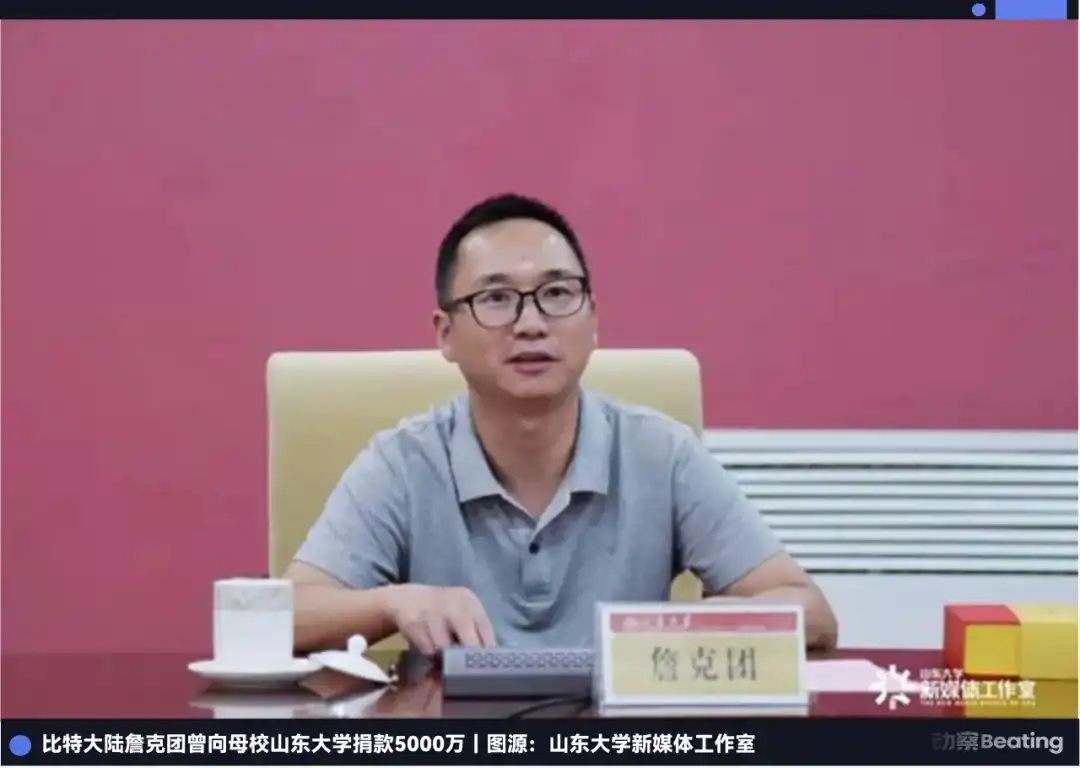
It wasn't until 2013 that Janke Tudor and Wu Jihan founded the company Bitmain.
It is said that Janke Tudor only spent two hours reading the Bitcoin whitepaper. He might not have understood the future of currency, but he understood the essence behind that math—it was a arithmetic game about hash collision.
In 2016, Bitmain made a decision that shocked the industry: they threw a massive chip order at TSMC. The Antminer S9, equipped with TSMC's cutting-edge 16nm FinFET process, emerged, not only as a capacity miracle in chip history but also created an unprecedented "thermodynamic furnace."
In Janke Tudor's eyes, the S9 was a chip; but in the eyes of the national grid, it was a pure industrial load.
Unlike a factory that operates day and night, it does not fluctuate with temperature. It operated with a smooth power curve 24 hours a day, not picky about voltage or background. From that moment on, a new system was born in the world: electricity, from a public service, transformed into a "B-side raw material" that could be instantly priced, traded, and liquidated; electricity, an energy source that is difficult to store at a low price once generated, embedded its value in a series of numbers in another form; Bitcoin mining began to become an industry: from the hydroelectric power in the mountains of Sichuan to the wind power in the grasslands of Inner Mongolia, Bitcoin miners operate on every inch of China's power-redundant land.
Perhaps at the time, Jack Dorsey did not realize that the industrial standard he defined for Bitcoin mining machines inadvertently rehearsed a perfect energy supply solution for the extremely thirsty American AI a decade later.
In the craziest year of 2018, Bitmain alone swallowed 74.5% of the global share. But that's not the scariest part. The scariest part is that the remaining share was also completely wrapped up by the Chinese. Whether it was the Shenma mining machine founded by Yang Zuoxing, the former chief chip designer of Bitmain, or the ASIC pioneer Canaan Creative, they were all Chinese faces.
This is not a global competition at all but a "Chinese Engineers Civil War" spanning 2000 kilometers: from the Olympic Science Park in Haidian, Beijing, to the Wisdom Park in Nanshan, Shenzhen, the heart of global hashrate, pulsating with the Chinese rhythm. It is an absolute closed loop that Silicon Valley has to look up to, completely locked down by the Chinese supply chain.
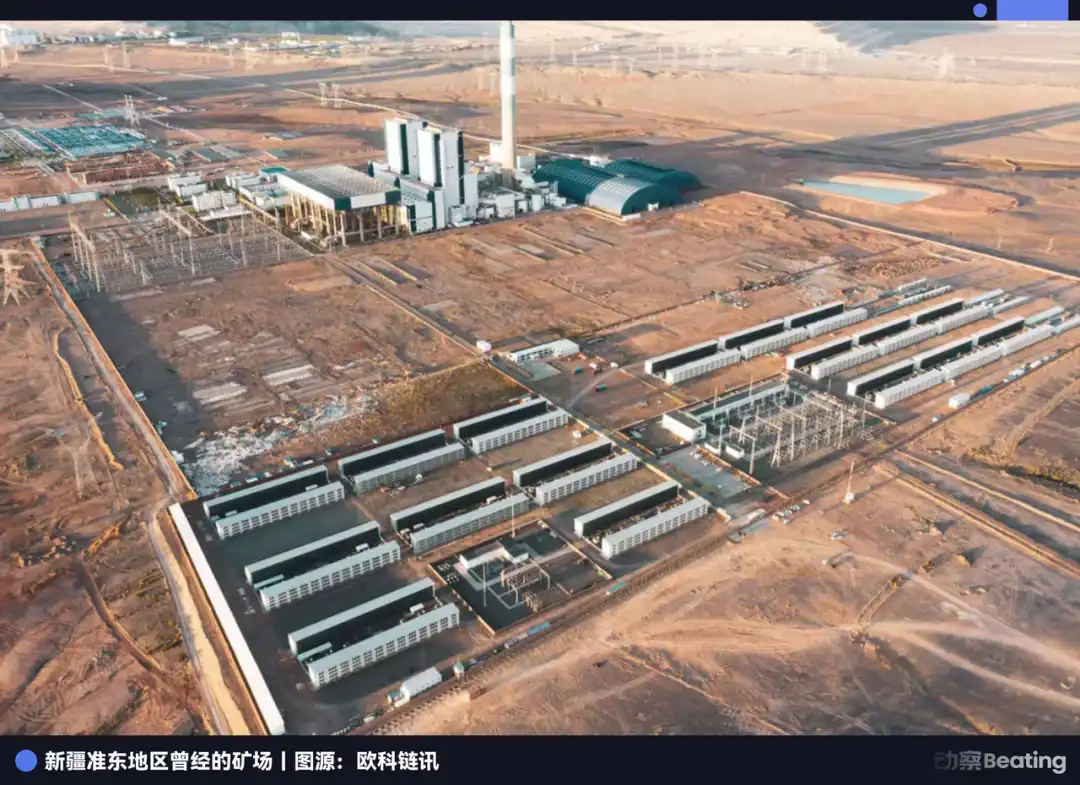
It wasn't until May 2021 that, with a regulatory ban, the continuous roar by the Yangtze River came to a sudden halt after several years.
For the country, this was the end of an electricity-consuming industry; but for the industry, it was the beginning of an epic "Great Technical Migration." Thousands of containers were loaded onto freighters and drifted across the seas, carrying not only the latest generation of Ant mining machines designed by Jack Dorsey but also a unique "electricity survival philosophy" honed in China.
One of the destinations: Texas, USA.
Here, there is an independent ERCOT grid and the wildest electricity trading market in the United States. For these "hashrate refugees" from the East, this place is simply an enhanced version of "Sichuan + Inner Mongolia."
However, when these Chinese people truly landed, the American energy sector was surprised to find that these were not refugees but a well-equipped "energy special forces."
When the mining companies were in Sichuan, the mine owners relied on drinking heavily with power plant managers and cultivating relationships to get cheap electricity, based on an unspoken "understanding." However, in Texas, this logic was rapidly upgraded to high-frequency trading algorithms.
Texas electricity prices fluctuate in real-time, changing every 15 minutes and can surge from 2 cents to $9 in extreme cases. Traditional Silicon Valley data centers (such as Google, Meta) are wary of such fluctuations, accustomed to lying on fixed rates like greenhouse flowers.
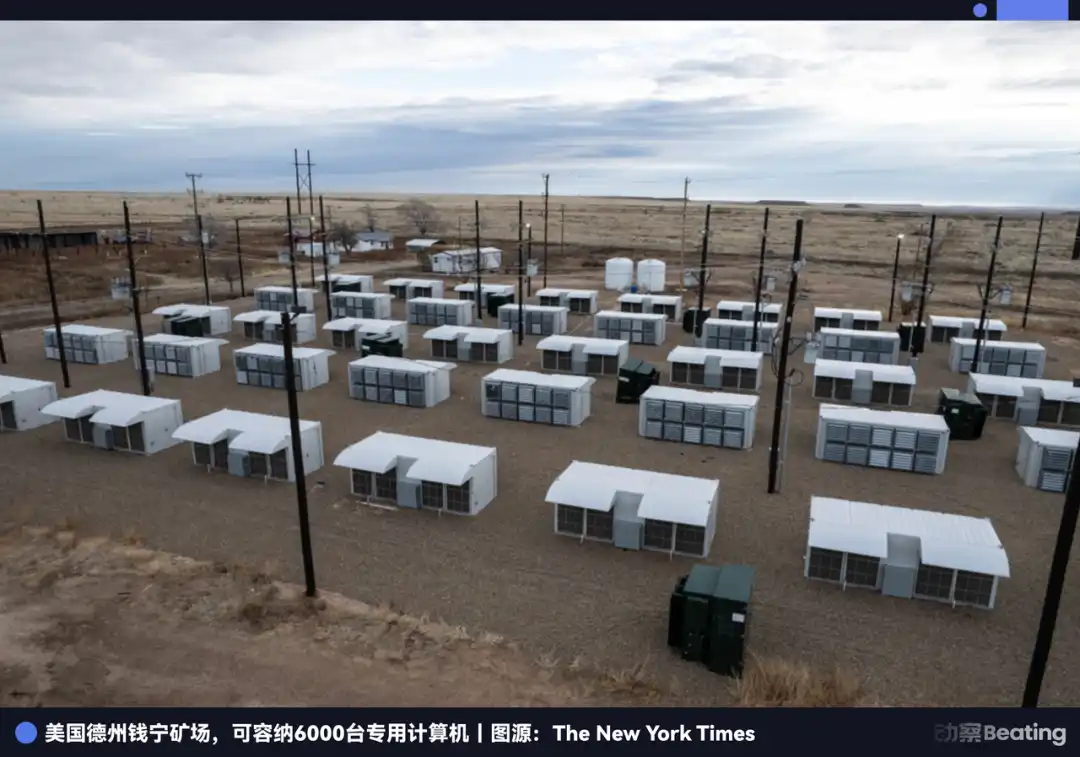
But how did Jack Dorsey's "disciples" react? They were excited.
They took the experience of manually controlling power on/off domestically in the past and turned it into an automated demand response program. When the electricity price is negative (such as when there is an oversupply of wind power in Texas, USA), they operate at full power, voraciously consuming electricity, to the point where the grid even has to pay them to use electricity; when a heatwave hits and electricity prices soar, they can cut off hundreds of megawatts of load in seconds, selling electricity back to the grid at a much higher price differential than mining.
This kind of "energy arbitrage" technique has left veteran American power traders dumbfounded. The likes of American mining giants such as Riot Platforms and Marathon today, thriving and transitioning to AI data centers, rely precisely on this electricity algorithm brought over from China.
Another legacy of the Jack Ma era is the extreme pursuit of physical infrastructure speed.
The traditional American data center construction period is 2-3 years, characterized by meticulous engineering by elite engineers. But the "mining circle" doesn't buy into this, as they believe that every second of downtime is a crime against profit.
Thus, on the Texas plains, a jaw-dropping "Chinese speed" has emerged that astonishes local builders: no exquisite glass curtain walls, no complex central air conditioning, only huge industrial fans roaring. This "modular, containerized, minimalistic cooling" infrastructure solution has forcefully compressed the construction period to 3-6 months.
This rugged yet highly efficient engineering capability was initially mocked as an "electronic junkyard" in Silicon Valley, but today, it has become a hot commodity—because the explosion of AI computing power is too rapid, and entities like OpenAI can't wait for 3 years; they need this "plug-and-play" infrastructure capability now.
Evidently, in Silicon Valley, you can buy graphics cards with money, but you can't buy time.
This "time" is a legacy of the crazy decade from ten years ago. Back then, for the sake of mining Bitcoin, Chinese miners and their successors madly acquired land and built substations in the US, accumulating a priceless "grid-connected capacity" today.
Electricity quotas are the new hard currency of American capital. The so-called "inheritance" is not inheriting that pile of silicon scrap iron, but inheriting the right of access to the power grid.
The reason mining companies can secure billion-dollar deals is simply because, in the current power-deficient America, they firmly hold the key to kickstarting the AI era.
The Migration Night of the "Invisible Champion"
This brutal joy will ultimately end in a brutal outcome.
2018 was a secretive watershed year in business history. In that year, Sam Altman, the founder of ChatGPT, was still worrying about the survival of his nonprofit organization; Musk had just barely survived a near-bankruptcy situation, and the computing power in their eyes was still just meek servers in a data center.
However, across the ocean, Jack's Gang and his Bit Continent have turned computing power into an industrial behemoth. They may not have understood the future of AI, but that hasn't stopped them from holding the key to the future: how to tame those greedy silicon chips in watts.
This is a story about grassroots heroes, national will, and a historical joke. In seven years, China nurtured a power-devouring behemoth in the swift currents and coal seas of the West, only to, on a summer night in 2021, uproot it with its own hands in pursuit of greater financial security and a dual-carbon goal.
To understand why the United States today is bowing so low to mining companies to absorb the power surge of AI, one must read about the "energy training" at the Dadu River in Sichuan, China, a decade ago.
Let's rewind to August 2019.
It was Bit Continent's heyday and also a brief window for China's mining industry to "turn gray to white." At that time, the Sichuan provincial government introduced a policy called the "Hydropower Consumption Demonstration Zone" to address the long-standing issue of "excess water during the flood season" (meaning electricity generated from water that cannot be utilized and is wasted).
This was a real red-headed document in places like Ganzi and Aba in Sichuan.
According to reports by Caixin at the time, under this policy, Jack's Gang's mining machines were no longer hidden "off the grid" in the deep mountains but became honored guests helping the local power grid "smooth out peaks and valleys."
At that time, Bit Continent was, in fact, acting as a "super capacitor" for the energy network in western China. Jack's Gang was proud not only of its 7nm chips but also of its ability to instantly convert surplus electricity into digital assets.
At that time, China held 75% of the global Bitcoin hash rate. From Wall Street to the City of London, everyone looking to join this game had to consider Jack's Gang's preferences and rely on the power load in Sichuan and Xinjiang, China.
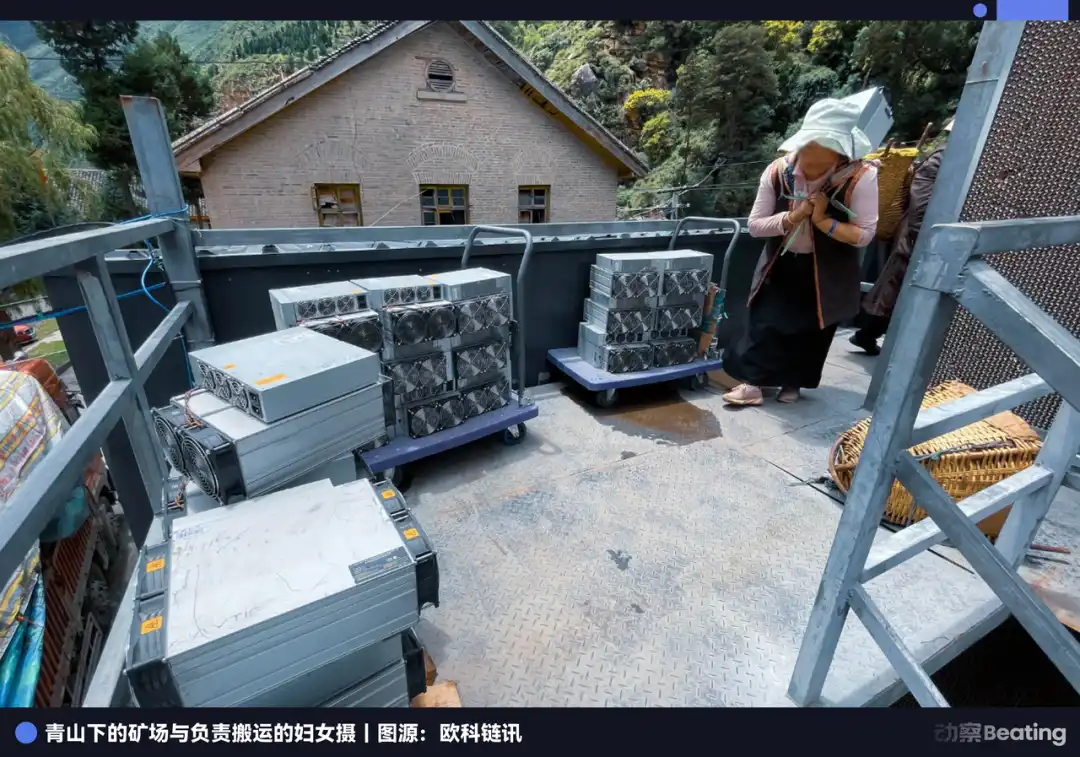
However, behind this "gray prosperity," two Damocles swords were always hanging overhead.
The first is "financial security." Regulatory authorities had long realized that this was not just a technological innovation but also a massive fund flow outside of foreign exchange controls.
The second is "dual carbon control." With the introduction of the "3060 dual carbon" target in 2020, the flow of every unit of electricity became a political account. The mining industry, a "high-energy consumption, low-employment, no physical output" sector, was destined to be sacrificed on the macroeconomic strategy scale.
The precise turning point in history was marked on May 21, 2021.
That evening, the State Council's Financial Stability and Development Committee held its fifty-first meeting, during which a highly impactful but succinct statement appeared in the meeting summary: "Crack down on Bitcoin mining and trading activities".
This was no longer the past practice of "warning of risks" or "restricting development," but the highest-level "shutdown order".
What followed was the most thrilling 30 days in the history of China's computing power industry. Inner Mongolia took the lead by directly cutting off power to coal-fired mining farms, followed swiftly by Xinjiang conducting a dragnet-style investigation.
The climax occurred on the night of June 19, 2021.
On that day, the Sichuan Provincial Development and Reform Commission and Energy Bureau issued a notice to clean up and shut down virtual currency "mining" projects. This marked the infamous "Sichuan Shutdown Night" within the industry.
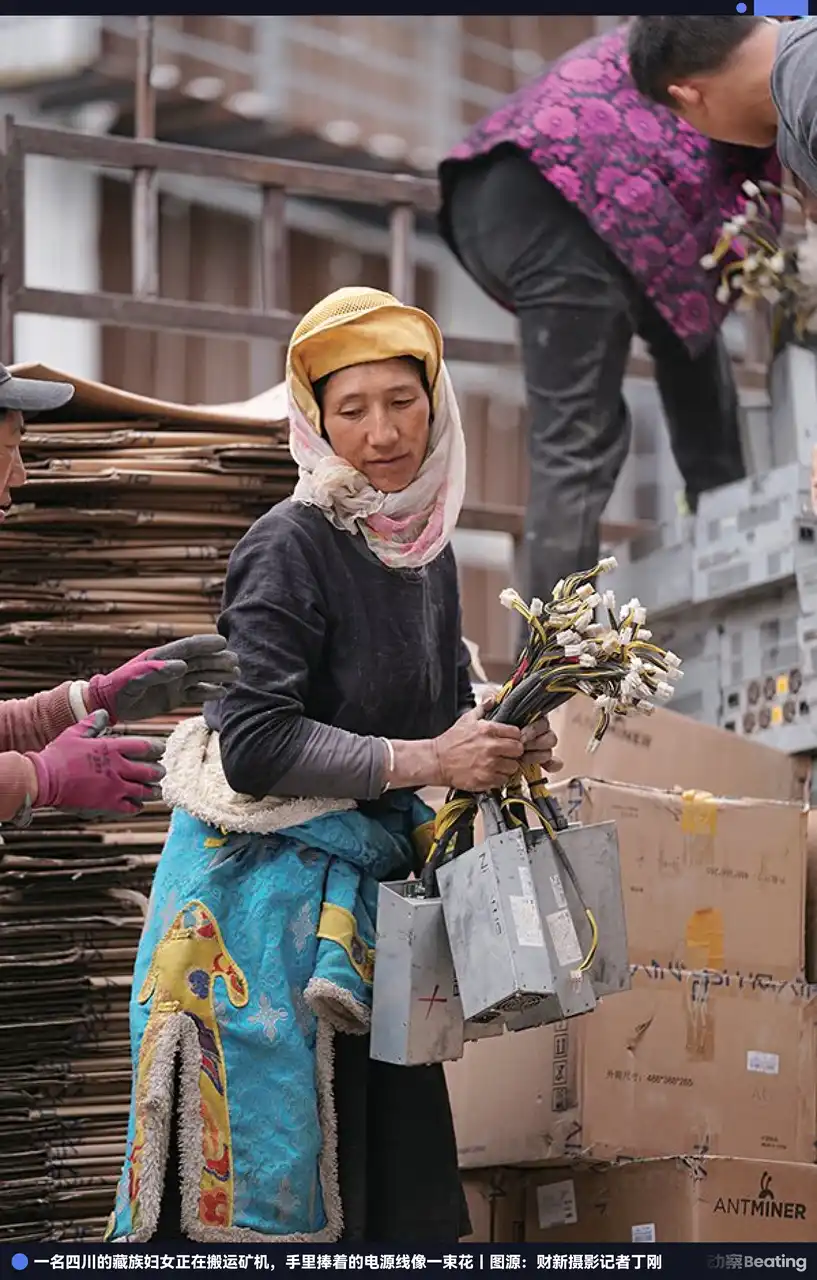
To this day, there is a circulating video of that night: in a super mining farm in Aba Prefecture, as the midnight bell rang, on-duty personnel, tears in their eyes, successively switched off the circuit breakers of the high-voltage distribution cabinets. The deafening roar of cooling fans, which had been running for years like an airplane taking off, disappeared in an instant.
The indicator lights of millions of mining machines went out simultaneously. The world suddenly fell eerily silent, with only the sound of the rushing waters of the Dadu River remaining.
At that moment, the global Bitcoin network's hash rate plummeted by nearly 50%. China, with a determined resolve, forcibly severed an industry that consumed billions of kilowatt-hours of electricity annually from the bloodstream of the national grid.
We successfully defended the financial front line and freed up valuable energy space. However, in the crevice of this grand narrative, an unexpected twist was planted: we kept the power but expelled the group of people who "understood best how to use it."
Yet, the machines that were disconnected from the power grid did not disappear; they began to roam.
In the latter half of 2021, an unprecedented congestion occurred at the Yantian Port in Shenzhen. According to descriptions from freight forwarder companies at the time, thousands upon thousands of shipping containers piled up like mountains, all laden with S19 mining machines dismantled from Sichuan and Xinjiang.
This was a computing power version of the "Dunkirk evacuation."
The story comes full circle.
In 2024, when ChatGPT took the world by storm, the AI giants suddenly realized: a lack of power, a lack of substations, a lack of high-power data centers that can be rapidly deployed.
While China cleared out "outdated capacity" years ago, it had neatly packaged and delivered the ability to "construct and operate large-scale, high-energy-consumption computing centers" to the world.
This was a strategic decision that was crucial for national financial sovereignty, decisively abandoning this high-risk digital highland. From a macroprudential perspective, this was absolutely the correct and necessary strategic action at the time. However, the irony of history lies in the fact that those massive bubbles and excess hashpower that were actively squeezed out and expelled eventually solidified on the other side of the ocean, becoming the most indestructible cornerstone of the adversary's grid and energy system.
But if one thinks that the endgame of this hashpower migration was merely "the East loses ground, the West gains benefits," then they only see the chips on the table, not the table itself.
The AI arms race, in essence, is an endless consumption of energy by computing clusters, ultimately leading to a battle over electricity costs. In this war of attrition, no country is more strategically deep-rooted than China.
The United States needs miners as this "flexible load" to patch up and prolong life, treating miners as bait to cure the electricity grid's "old age ailments."
However, China is different, possessing a national power grid as its central brain. Through Ultra-High Voltage (UHV) power transmission, it seamlessly transports the cheapest clean energy from the west to the data center clusters in the east like a continuous blood supply, with low loss.
Nevertheless, swept along by the tide of history, Bitmain, the power management exemplar of the Chinese hashpower era, inadvertently became a strategic force reshaping the global energy landscape. They unintentionally offered their honed skills by the Yangtze River to the other side of the ocean, fortifying the first circle of the power wall for the upcoming American AI age.
The Fate of "Defected" Mining Enterprises
So, have these "bitcoin-era miners who defected" truly made a leap to sit at the table of the AI age?
The answer may lie in the calculations of the giants. Have you ever wondered why tech behemoths like Microsoft and Google, with billions in cash flow, truly entrust their power lifeline to mining companies? Just because they found the self-construction timeline too long?
Of course not. The fundamental reason is that they fear the lessons of history more than anyone else.
Looking back at business history, there is actually an invisible tombstone on the mahogany desks of Silicon Valley elites, engraved with a once soaring name: Global Crossing.
This was the most tragic infrastructure giant to perish in the 2000 internet bubble. At the time, America's elites firmly believed that in just a few years, the whole world would enter the internet age, and people would increasingly need faster internet speeds. In this religious-like fervor, founder Gary Winnick debt-financed billions of dollars and, like a madman, laid tens of thousands of kilometers of fiber optics on the seabed within a few years, connecting the Americas, Europe, and Asia.
After the bursting of the dot-com bubble, ".COM" websites only needed to shut down servers, lay off employees, and they were done with bankruptcy liquidation. However, infrastructure providers faced a huge asset burden: the optical fibers buried under the Pacific Ocean, capable of transmitting trillions of bytes per second, overnight turned into the most terrifying "dead asset" in shareholders' eyes — unsellable and immovable, only able to quietly lie on the dark ocean floor, slowly decaying on the balance sheet.
In 2002, Global Crossing collapsed under the weight of $12.4 billion in debt. The most ironic outcome was: Li Ka-shing's Hutchison Whampoa later tried to pick up these assets at less than 1% of the price, as if picking up scrap metal.
Global Crossing demonstrated a cruel truth with its own corpse: in the early stages of technological revolution, whoever bears irreversible heavy assets will be the first scapegoat in a downturn. They thought they held the data arteries of the future world, but ended up sacrificing themselves as infrastructure.
Today's Microsoft CEO Satya Nadella and Google CEO Sundar Pichai surely remember this tombstone more than anyone.
Therefore, when you open the financial reports of these past two years, you will find that their core risk control consists of four words: asset isolation.
The CapEx capital expenditures of AI giants are skyrocketing, but every penny is meticulously considered: on one end are GPUs and customized servers, these relatively "general" assets can be quickly reoriented, and if they really don't work, they can be sold at a discount; on the other end are data center buildings, cables, and cooling systems, typical "specialized heavy assets," trying to spin off the most difficult-to-exit assets.
The real calculation is right here: they want to spread that "pit" to others.
The AI giants are trying to use long-term computing power contracts, power contracts, and park leases to create a chain that "looks like OpEx operating expenses, but essentially shifts the CapEx risk to others."
For the miners who have been recruited and the infrastructure players eager to transform, the words of the giants are enticing: "You are responsible for investing money to build factories, you are responsible for handling liquid cooling renovations, I am responsible for signing electricity contracts. As long as AI becomes a dividend of the times, you collect rent according to the contract, and I get business growth and stock price returns."
It sounds like risk sharing, but upon careful consideration, it's more like the popular saying: "You die with a friend rather than die a pauper."
But what if AI is ultimately proven to be another illusion like the Global Crossing incident?
Big tech giants can easily exit gracefully by paying a small default fee, taking a one-time asset impairment, and then continuing to tell the next story. However, those who truly have to face the bank's loan reminder letters and explain to creditors how to deal with factories custom-made for high power-density, where nothing can be done except plugging in an H100, or this batch of infrastructure white knights who thought they had finally made it to the table.
Furthermore, someone may ask: What if the AI bubble bursts, and mining companies simply remove the GPUs and switch back to mining rigs to continue mining coins?
More realistically, most mining farms that "transition to AI" do not have interchangeable hardware: AI data centers use GPUs and liquid cooling, while Bitcoin requires ASIC shipping containers for ultimate cost efficiency, and these two systems are hardly compatible. The capital market has already given you a premium on "AI infrastructure stocks," and announcing a return to mining would shift the valuation anchor back from AI to "high-energy-consuming miners," but the factories remain, and the narrative and market cap would be liquidated first.
So history will not repeat itself, but it always rhymes with a similar beat. The fiber optic cables that were laid on the seabed back then, the data centers standing in the wilderness today, the payers of the bill may have changed, but their roles remain the same.
Greatness Cannot Be Planned
Today, in the strategic game of AI competition between China and the United States, computing power and electricity are two crucial winning moves.
Although the United States lags behind China in the efficiency of power grid construction, it has unexpectedly acquired a massive "shadow inventory." When Silicon Valley's data center construction is stymied by environmental regulations and supply chain constraints, these mining farms can quickly step in to power the training of GPT-5 and GPT-6.
The allure of the business world lies in its unpredictability. All strategic planning is essentially looking in the rearview mirror at the road traveled.
This is an unexpected strategic assistance campaign. It was not planned by the policymakers in the White House or deduced by the Pentagon but inadvertently constructed by a group of wandering Chinese engineers and a bunch of profit-chasing speculators in the chaos of the market game.
The world is always full of "precise errors" and "ambiguous correctness." This may be a fable left by business history: Greatness has never been able to be planned.
Disclaimer: The content of this article solely reflects the author's opinion and does not represent the platform in any capacity. This article is not intended to serve as a reference for making investment decisions.
You may also like
Gelatin Snacks Gain Popularity, Yet Specialists Warn: Not an Instant Solution
- Burn Blend released a gelatin-based snack protocol with three formulations targeting weight management and metabolic health, following a 340% surge in "Gelatin Trick Recipe" searches and 50M+ social media views. - Morning, afternoon, and evening recipes combine ingredients like berberine, chromium, and herbal teas to address thermogenesis, blood sugar control, and recovery, requiring precise preparation steps. - The company emphasizes the protocol as a dietary supplement tool, not a standalone solution,

Malicious Software Abuses npm Preinstall to Steal Sensitive Data, Compromising 25,000 GitHub Repositories
- Wiz Research identified Shai-Hulud 2.0, a supply-chain attack exploiting npm's `preinstall` phase to hijack 25,000+ GitHub repos and steal secrets from crypto/developer tools. - Malware infiltrates packages like `@zapier/zapier-sdk` and `@ensdomains/ens-validation`, using GitHub runners for credential theft and workflow injection across ecosystems. - Attackers create self-hosted runners, exfiltrate secrets as artifacts, and delete traces, with new compromises emerging at 1,000 per 30 minutes. - Security
Connecting Conventional Finance with Cryptocurrency: Revealing Korea’s Leading Fintech Force
- South Korea's Upbit and Naver Financial will merge to create a fintech-crypto powerhouse, aiming for a Nasdaq IPO by 2026. - The stock-swap deal grants Dunamu shareholders 30% of the combined entity, while Naver's stake drops to 17% to address antitrust concerns. - Regulators are scrutinizing the merger, with Dunamu transferring over half its voting rights to Naver to balance control and compliance. - The post-merger entity's valuation rose to KRW 50 trillion ($34.5B), reflecting confidence in growth and

The ChainOpera AI Token Crash: An Alert for Cryptocurrency Initiatives Powered by AI
- ChainOpera AI token's 96% collapse in late 2025 exposed systemic risks in AI-driven crypto projects, highlighting governance, algorithmic, and regulatory flaws. - Centralized control by ten wallets and opaque AI models triggered liquidity crises and panic selling, undermining decentralization principles. - Regulatory ambiguity from the 2025 GENIUS and CLARITY Acts exacerbated instability, deterring institutional investment and amplifying market volatility. - Market sentiment shifted rapidly, with investo

